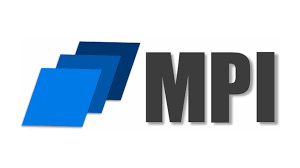Creativity is a powerful driver of innovation and progress, sparking new ideas and ways of thinking that can transform the workplace. Many senior leadership teams recognize the importance of integrating creativity into their organizations to stay competitive in an ever-evolving business landscape. By understanding the benefits of creativity and implementing strategies to foster it, managers can create a work environment that inspires employees at all levels to think outside the box and contribute to the company’s success.
Workplace creativity refers to the ability of individuals to generate innovative ideas and solutions that can enhance productivity, profitability, and growth within the organization. Companies that embrace creativity are more likely to innovate with new products, services, and processes that set them apart from their competitors. In creative organizations, leaders prioritize cultivating a culture of innovation that values creative thinking and encourages employees to explore new ways of approaching their work.
There are numerous benefits to promoting workplace creativity, including increased team engagement, enhanced motivation, and a greater capacity for innovation. When employees are encouraged to think creatively, they are more likely to feel connected to their work and motivated to contribute their ideas to help achieve the company’s goals. Creativity can also be a valuable tool for overcoming challenges and solving problems in a way that traditional methods may not allow.
One of the key advantages of fostering creativity in the workplace is the ability to accelerate personal growth and development. By encouraging employees to take risks, experiment with new ideas, and learn from their experiences, organizations can create a culture of continuous learning and improvement. Employees who are empowered to be creative in their work are more likely to expand their skill set, gain valuable experience, and take on new challenges that contribute to their professional development.
In addition to personal growth, workplace creativity can also boost efficiency and productivity within the organization. Creative office cultures that prioritize collaboration and idea-sharing can help teams work together more effectively and implement innovative solutions to improve processes and achieve goals. By fostering a sense of excitement and engagement around creative projects, organizations can motivate employees to work harder and achieve greater success.
Creativity is also essential for establishing agile working practices that allow employees to adapt quickly to changing circumstances and seize new opportunities. By encouraging employees to think creatively and take ownership of their work, organizations can create a more dynamic and responsive environment that facilitates innovation and growth. When employees are given the freedom and flexibility to experiment with new ideas and approaches, they are more likely to discover innovative solutions that drive the company forward.
Moreover, a creative working culture can have a positive impact on employee well-being, as it provides a platform for individuals to express their thoughts and ideas in a safe and supportive environment. By encouraging open communication and collaboration, organizations can empower employees to share their perspectives and seek assistance when needed, reducing workplace stress and fostering a sense of belonging and connection within the team.
In conclusion, workplace creativity has numerous benefits for both employees and organizations, from promoting innovation and personal growth to enhancing efficiency and teamwork. By recognizing the value of creativity and implementing strategies to foster a culture of innovation, managers can create a work environment that inspires employees to think creatively, collaborate effectively, and drive success for the company. As organizations continue to adapt to changing market conditions and technological advancements, creativity will be an essential tool for staying competitive and achieving long-term success in the business world.

